slides from the presentation “Use of natural and artificial nests by Southern Ground-Hornbills in the Associated Private Nature Reserves, South Africa by Kate Meares during the 6th International Hornbill Conference.
space
Use of Natural and Artificial Nests by Southern Ground-Hornbills in the Associated Private Nature Reserves, South Africa
by Kate Meares
Percy FitzPatrick Institute of African Ornithology

Nesting attempts of Southern Ground-Hornbills in the Associated Private Natures Reserves (APNR), South Africa, have been monitored since 2000. A permanent research base is located in the APNR and we at the Percy FitzPatrick Institute investigate home range and habitat use by means of satellite tracking, nesting attempts, and changes in group compositions over time.

The APNR is situated in the province of Mpumalanga in the north eastern corner of SA and borders on Kruger National Park. From Joburg its a half day’s drive, about 500 kms.
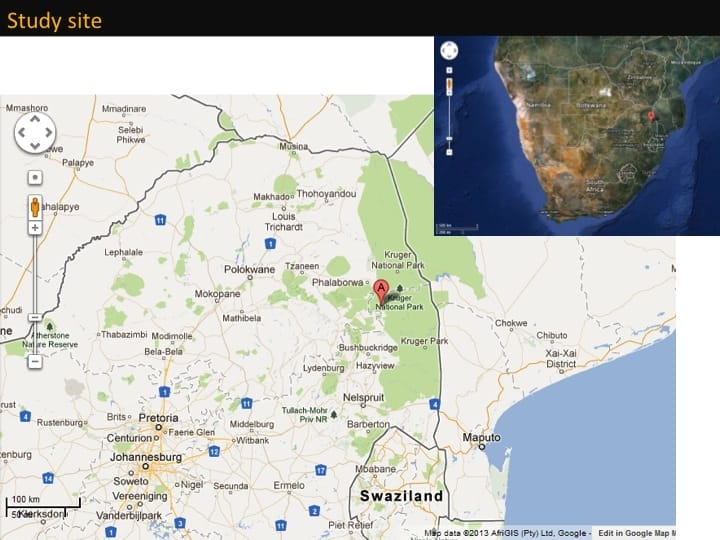
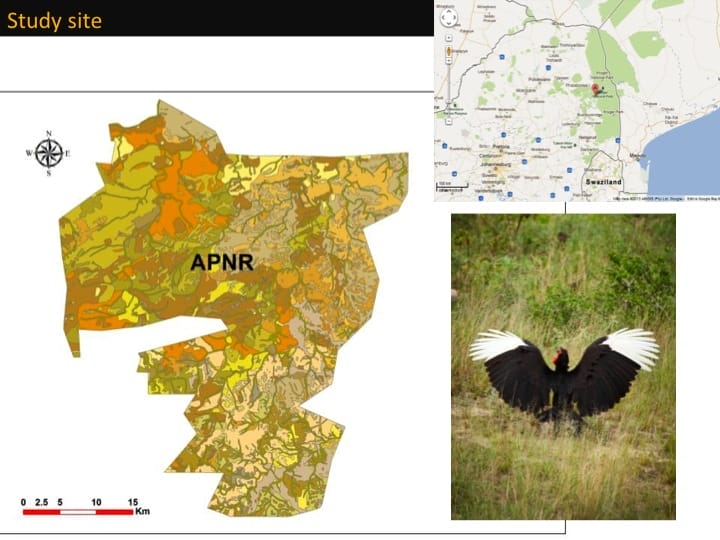
The APNR comprises Klaserie, Timbavati and Umbabat Private Nature Reserves, more recently Balule and Jejane Nature Reserves with a combined area of 180 000 ha. This makes it one of the largest combined area of private nature reserves in South Africa. Its had the nature reserve status now for over 60 years having been originally mostly cattle farmers. The reserves comprise blocks of privately owned land, but no fences between them so the reserves function as single entity. Included in our study site is a contractual parks area in the south east governed by Kruger National Park. Two of our borders are shared with Kruger National Park with fences being removed in the 1990’s. To our south: Manyaleti Private Nature Reserve, to our west: Olifants West, Kapama, Thornybush and an operational Air Force Base. Birds are known to utilise their areas.
When we began the study of SGHs in the APNR, it was clear from early on that the number of natural nests available was a limiting factor for birds in this area. Twenty nine artificial nests were erected within the first two years. Mapping them we get this picture.

Used artificial nests in blue, unused artificial in red, and the known used natural cavities in black. Although no study was done to investigate how many breeding groups there were in the APNR prior to the instalment of artificial nest boxes, the birds took the boxes quickly and with nesting attempts taking place that first summer season after the boxes were installed.
There are currently 21 used artificial nest boxes and only 6 natural. 23 known breeding groups making the number of SGHS in the APNR to total close to 110 birds.
Some groups have more than one box in their home-range. In some instances birds will use both, in other instances birds favour just the one, with the other box left alone, sometimes taken over by other species: owls, genets, even pythons during the cold winter months.
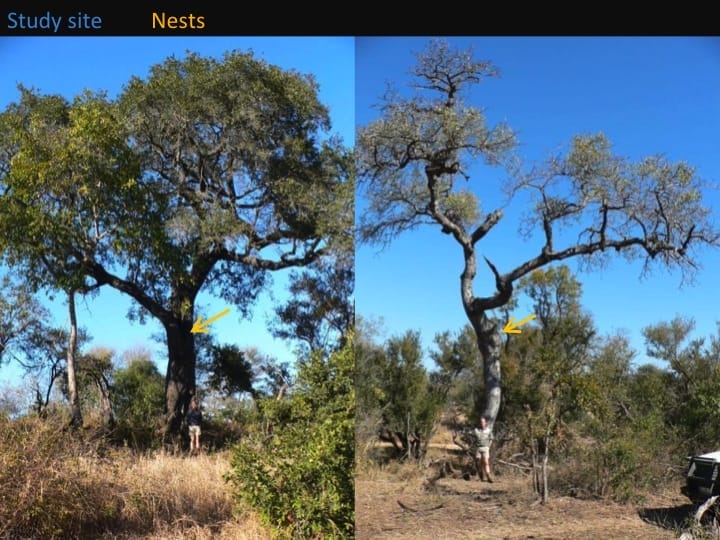
On the ground this is how it looks. These pictured here are two actively used by SGH groups, the one on the left a deep cavity in a Jackleberry tree alongside a drainage line. If you remember my title slide with an incubating female, she was photographed in this cavity. Sop deep when it comes time to measure and weigh eggs I have to lean my whole body into the cavity, legs in the air.

Here the female sits in a slumber-like state, seemingly unaware of my presence at the entrance hole. To inspect eggs underneath her, I need to gently lift her bill so her eyes see me, then I see her pupils dilate and contract. I leave her and move down the ladder. Shortly thereafter she leaves the nest and watches me from a nearby tree.
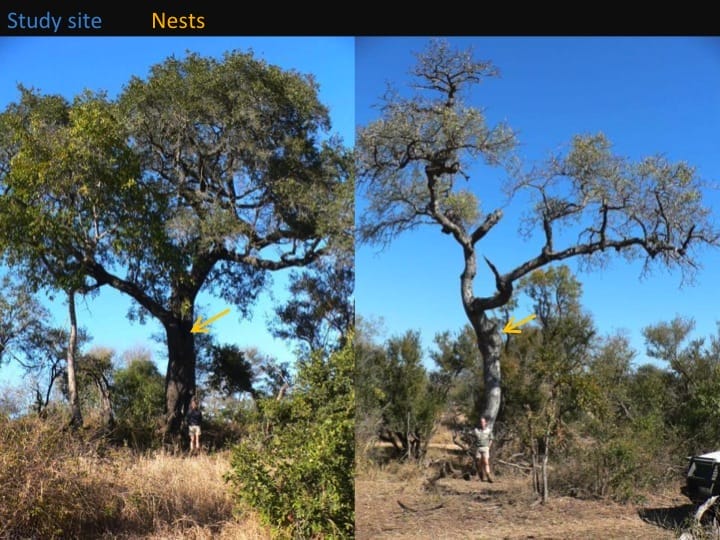
On the right a shallow exposed cavity in the elbow of a male marula tree. Female unnervingly incubated inside while elephant come to feed on fallen marula fruit, often brushing themselves against the tree causing the tree to shake. In recent years a squirrel pair have shared this cavity, using the ‘upper floor’ deeper into the cavity above the nest to raise their pups. Now to look at artificial nests…

Artificial nests are positioned between 3 and 9 m above ground in the forks of large trees. This to withstand heavy winds, elephants etc. Ideally nests should have suitable branches close to the entrance to allow for easy access by individuals (birds and humans!).

We installed perches in front of the nest hole to allow the male to perch easily there and feed the female incubating inside.
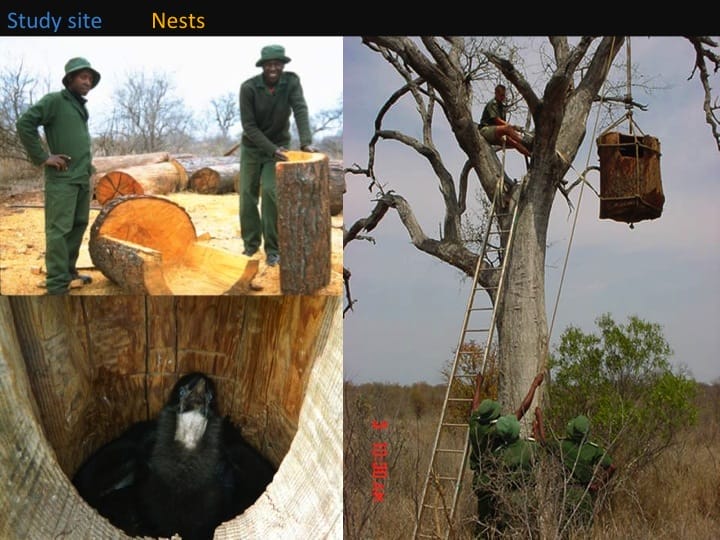
Artificial nest are constructed from hollowed out Eucalyptus logs. Logs are split in two before being hollowed out, the two faces then rejoined using metal bolts . Nests were installed in the early days of the Project and wouldn’t have been possible without the help of Bruce Macdonald who sourced the huge logs for us, as well as Klaserie rangers, and reserve wardens for helping with the logistics of getting the heavy nests into the trees.
What makes a nest site a good one?
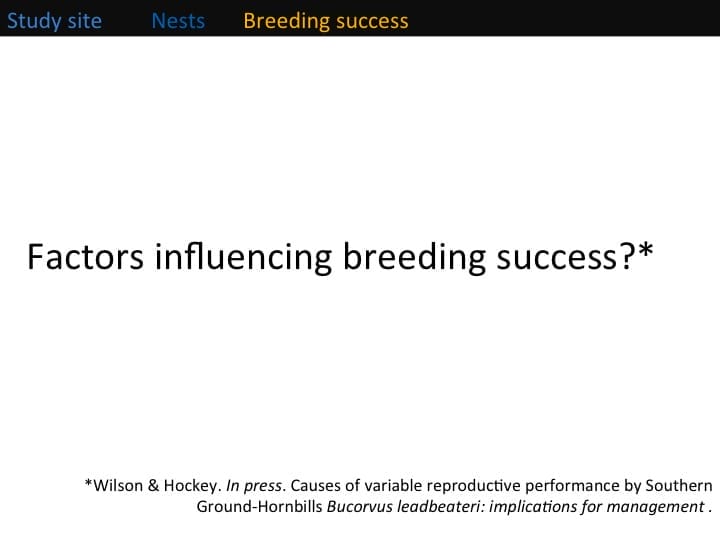

When one looks at nest site characteristics, specifically natural nests, she found that the amount of open space within 3 km radius to the nest positively influenced breeding success. This since groups condense their home-range during breeding season around the nest. The more open space, the greater their foraging success and hence greater their ability to provision for a growing and continuously hungry chick. This would be a good management tool to increase breeding success for groups using that natural nests. And the same could be done for artificial nest sites too.

Using iButtons mounted to the roof and walls of natural and artificial nests I could record nest conditions throughout the breeding season and compare. Firstly I had to check that they could withstand a curious pecking by the SGHs. After a few trials and errors I found using a plastic mount skrewed in with a piece of velcro at the back to keep the ibutton in place should it get tossed out the nest (which happened once, luckily iButton was still in mount and had interesting ground temperature recordings for a few days). They took temp and humidity readings every hour for four and a half months.

Looking at artificial nests, I found temperatures dropped to 9 oC during the early hours of the morning a few minutes after sunrise, at reached 41.5 degrees between 1 and 2 pm.
Natural nests reached much higher temperatures due to the exposure of these nests: I Buttons were sometimes in direct sunlight and would increase by as much as 20 degrees in 60 minutes. Temps would reach as high as 70 degrees in the direct sun. This must affect breeding success, heat stress playing a role in breeding failure. I believe this would be another reason why artificial nests were so successful.


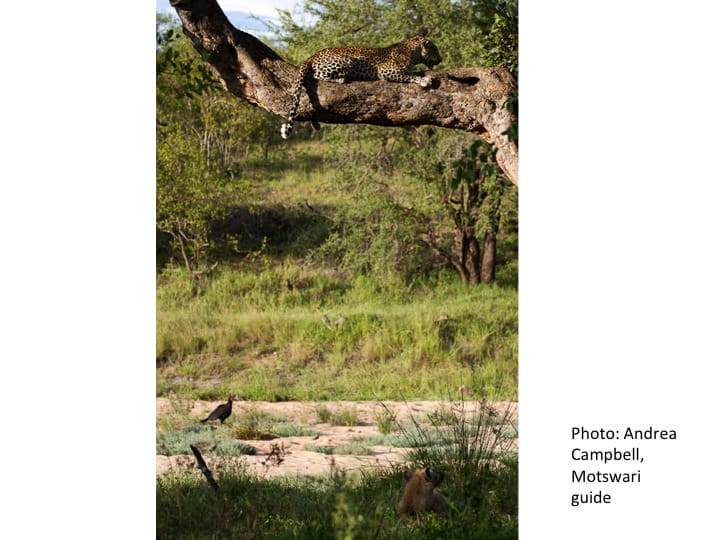
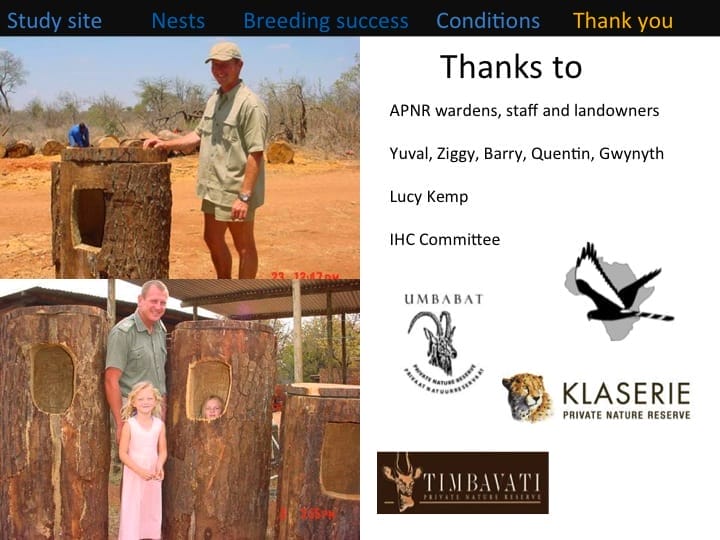

Pingback:May 2013 | e-BON
Interesting article! It is good to know that there are concerned people who give time making a study to help birds have nest. This is important becuase time might come that these birds might go instinct, unable to hatch their eggs due to lack or no nest at all. Thanks for sharing.